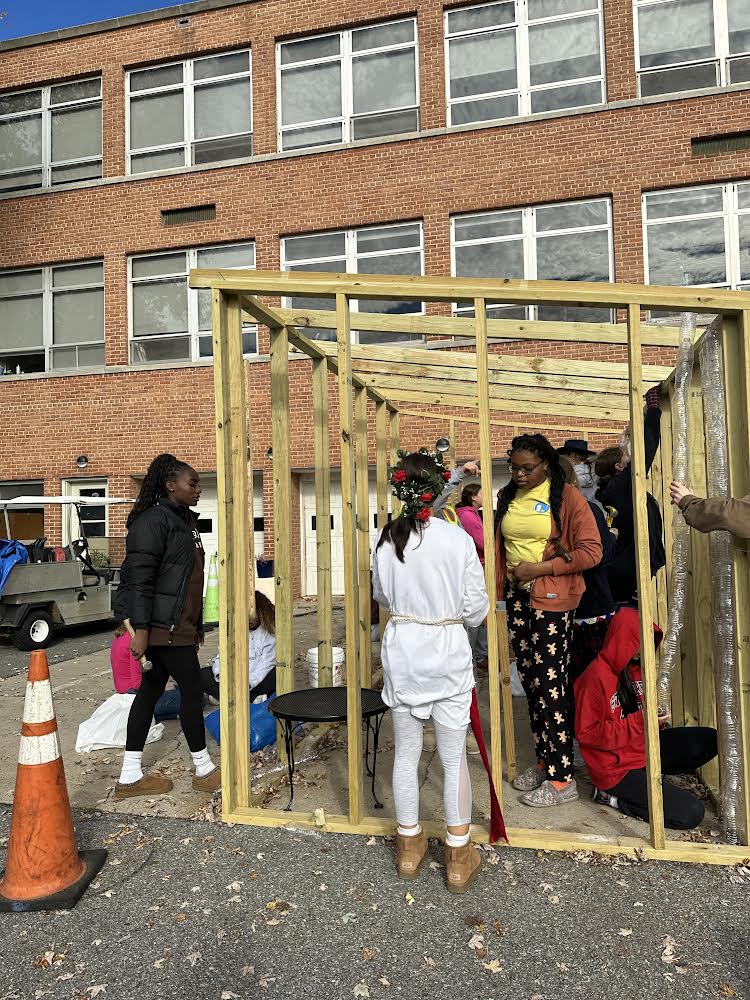The juniors taking physics have begun construction on Holy Cross’s new greenhouse. It will be partially an experiment and hopefully a way to sustainably grow a garden on campus.
This greenhouse is the brainchild of Minnie James, a physics teacher who has been working at the school for six years. She started construction with the help of her students in the fall of this school year.
“I researched other high schools physics projects to find an interactive way for the students to connect with the content,” James stated. “I was partially inspired by my passion for gardening and my determination to protect our nature and sustain the resources that we have.”
This proved to find its way into the lesson plans and was a big motivating factor for the choice to build this construction.The greenhouse is nearly complete and is made for the most part out of recycled materials, specifically plastic water bottles. James chose bottles because they are translucent, which allows light to pass and also filled with air which serves as an insulator.
“I wanted to make sure the materials were upcycled and recycled,” James added.
This project focuses on climate protection and James hopes that the students take these concepts of environmental protection with them into their adult lives.
Although James had a clear vision on how the building process would go, many students had their doubts.
“I didn’t think it was going to work,” junior Emma Hoefer claimed, “I didn’t know how you could assemble a greenhouse with only plastic water bottles.”
Hoefer felt that at first the process was quite hard but when the students’ work was complete she was impressed.
“I felt like I was making a difference and honestly I loved it,” Hoefer explained.
Other students had more technical concerns about the greenhouse’s effectiveness. Junior Hannah Chen was hesitant at first to start construction as she did not think that the insulation would effectively allow for plants to grow during the winter months.
“I learned that insulation can come from air trapped in plastic,” Chen said.
This tedious process ended up being worth it as temperatures are much higher in the greenhouse than outside. Overall the work is not complete as James still has hopes to continue adding new features relevant to the lesson plans.
“I also am hoping that next year chemistry students will be able to do PH experiments with the soil,” James theorized.
James is hopeful that the project will be an educational and useful feature of the science program.


